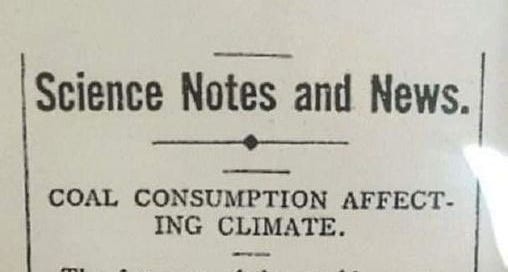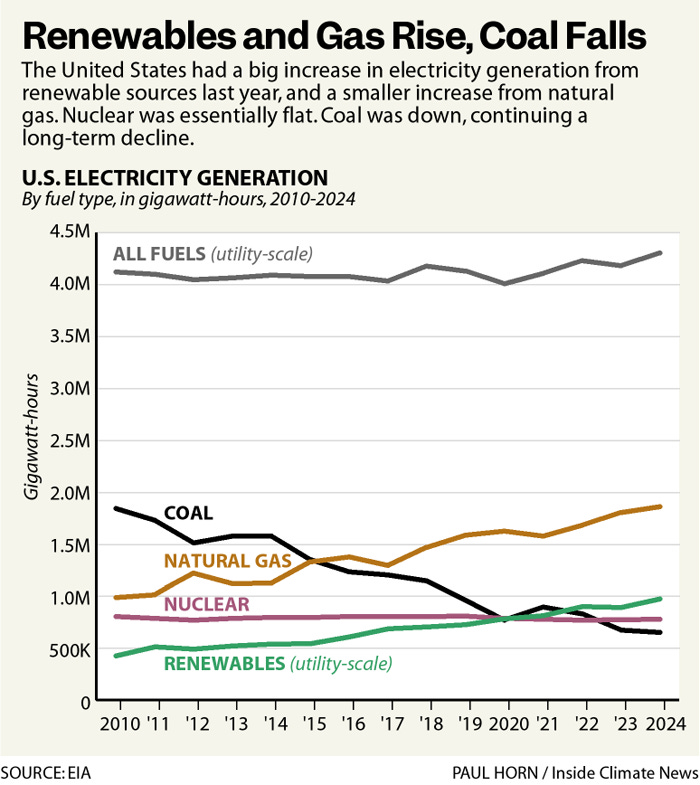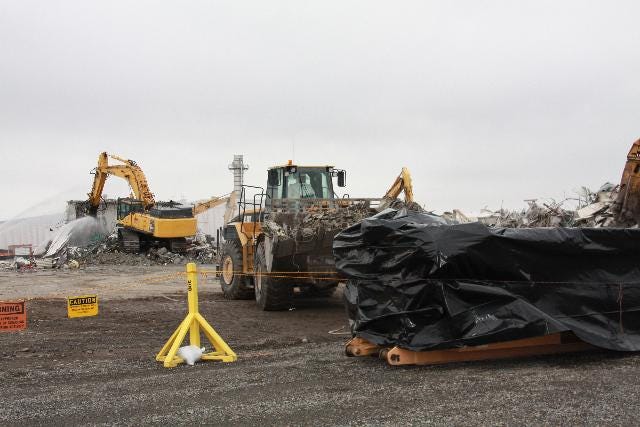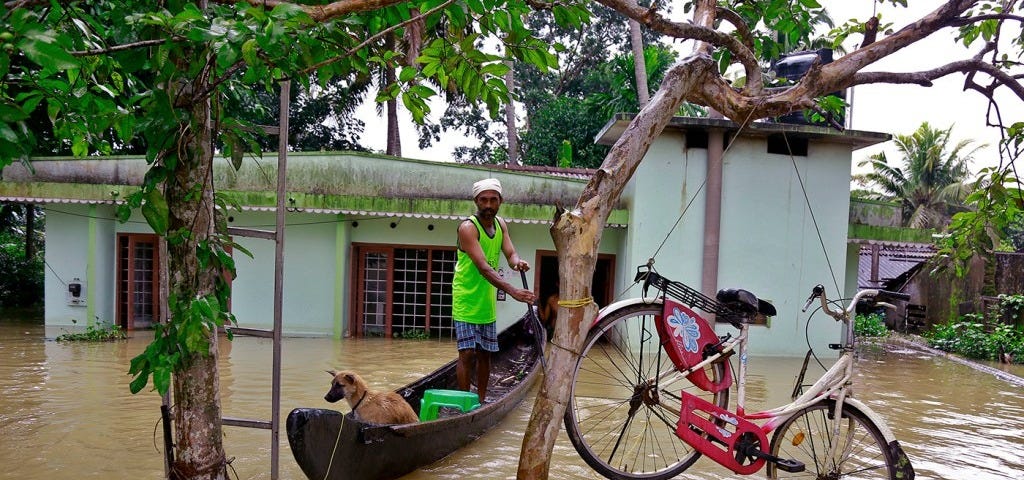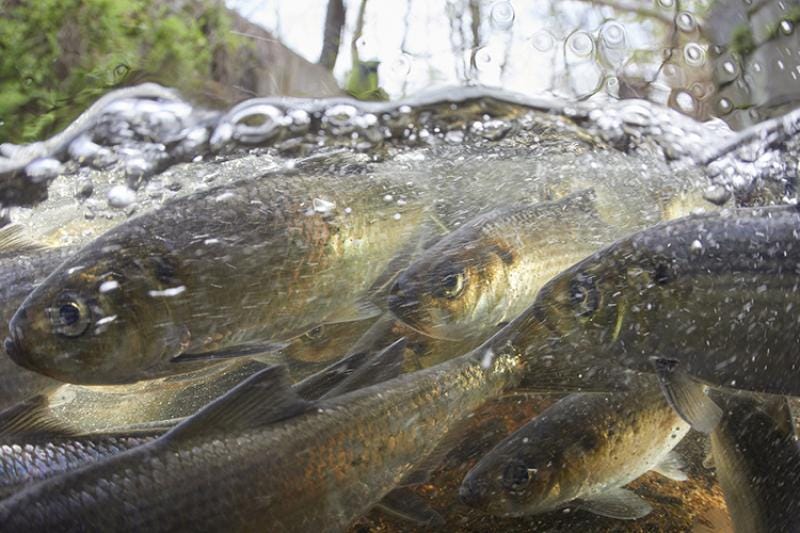Mar 7: Rehabbed loggerheads thrive, offshore wind update, SCOTUS strikes again
And a fun video of turtles being released (because we need this)
NOTE: The table of contents items below are linked to the articles, but this feature only works if you are reading the post in Substack while logged in - apologies for the inconvenience.
In this issue:
Cape & Islands
Reminder: Draft Cape Cod Freshwater Strategy available for public comment, March 17 deadline
NOAA cuts come to Narragansett Bay and Woods Hole facilities
Massachusetts
Vineyard Wind plans to test aircraft lighting system - 12 turbines to go dark starting this week
More Vineyard Wind: Federal officials require review of lightning-struck turbine
SouthCoast Wind construction start date hit by four-year delay
United States
Scientists are rising up to resist Trump’s (and Musk’s) slash-and-burn tactics
Most contaminated US Nuclear site is set to be the country’s largest solar farm
International
Events and Activities
Mar 8, in person — Mass Audubon’s Natural History Conference
Mar 25, in person — Climate Change: What Homeowners Should Know & What They Can Do
From APCC: Volunteers Needed for 2025 River Herring Count Across Cape Cod
Conservation calendar — great hikes, talks, and activities across the Cape
Cape & Islands
Video of loggerhead release from New England Acquarium.
Rehabilitated sea turtles from New England Aquarium surviving years after release back into the ocean
Acoustic tagging data shows loggerhead sea turtles returning annually to Cape Cod
New England Aquarium, Mar 4, 2025
Loggerhead sea turtles that were rehabilitated at the New England Aquarium and released back into the ocean in 2021 and 2022 are still alive and showing a surprising affinity for New England habitats, according to data transmitted from surgically implanted acoustic tags. This research fills a critical data gap on the survival and movements of rehabilitated sea turtles over several years.
“These acoustic transmitters are telling us that rehabilitated sea turtles can survive beyond that first year, and they are showing up in well-established feeding areas. That gives us confidence in their ability to reintegrate into the wild population,” said Dr. Kara Dodge, research scientist in the Aquarium’s Anderson Cabot Center for Ocean Life. “We’re also finding that some turtles are returning to New England waters in the summer and fall, which was surprising and tells us this area may be more important for loggerheads than we previously thought.”
Researchers use acoustic telemetry to collect information about the movements of ocean animals. The transmitters are electronic tags that broadcast a series of “pings” into the surrounding water. These transmitters ping listening stations like an E-ZPass system when an animal passes by.
“It’s a little like Christmas morning every time we receive a new set of data,” said Dr. Charles Innis, a senior scientist and veterinarian at the Aquarium who pioneered the internal acoustic tagging procedure for sea turtles. Full story.
'Alarm bells.' After low oxygen scare in Cape waters, Falmouth company uses $2M to help
Cape Cod Times, by Denise Coffey, Mar 2, 2025
In a small room in the Falmouth Technology Park, Noah Van Home is assembling 450 sensors that will be scattered in waters from Maine to New Jersey to help scientists, fishermen and businesses in the blue economy learn more about the ocean.
The sensors, or data loggers, are part of a project involving a private-public partnership funded by a $2 million grant from the Massachusetts Technology Collaborative and spearheaded by the Cape Cod Commercial Fishermen’s Alliance.
Lowell Instruments of Falmouth has been hired to manufacture the data loggers that will collect bottom water temperature and dissolved oxygen readings. The program gives fishermen and scientists a look at what’s happening in the water, not just on top of it.
The Massachusetts seafood industry is crucial to the state economy. The state’s ex-vessel value of landings (price fishermen receive for catch) in 2019 was $679.3 million, according to the Massachusetts Division of Marine Fisheries.
But declines in the populations of scallops and lobsters have been documented over the last few years, according to the state agency. While the reasons aren’t fully understood, some scientists and fishermen believe warming waters play a part.
Data loggers and deck data hubs will be installed on 250 fishing vessels fishing close to the Canadian border, throughout the Gulf of Maine, at George’s Bank, along the outermost Cape Cod towns and down the continental shelf to the coast of New Jersey. They will be installed on dredges and used on a variety of fishing gear. Full story.
Statement from Barnstable County:
Barnstable County Commissioners and Assembly of Delegates oppose changes to Clean Water State Revolving Fund
Published on: February 27, 2025
Barnstable County leaders are uniting against proposed changes to the Clean Water State Revolving Fund (CWSRF) Intended Use Plan, warning that the revisions could disrupt critical wastewater projects across Cape Cod.
In a special meeting on February 26, the Assembly of Delegates passed Resolution 2025-05, formally opposing the draft 2025 CWSRF Intended Use Plan (IUP) and calling on the Massachusetts Department of Environmental Protection (DEP) to reverse proposed changes that would impose a $50 million annual funding cap per town and eliminate guaranteed multi-year financing. As part of the resolution, the Assembly authorized sending a formal letter to DEP Commissioner Bonnie Heiple, detailing the potential consequences of these policy shifts on Cape Cod’s wastewater infrastructure.
“Cape Cod towns have spent years developing wastewater solutions to protect our environment and economy,” said Sheila Lyons, Chair of the Barnstable County Board of Regional Commissioners. “These changes undermine that progress and create financial uncertainty that could halt projects in their tracks. Our communities need long-term commitments—not roadblocks—to ensure clean water for future generations.”
The CWSRF has been a key resource in supporting Cape towns as they invest in large-scale wastewater infrastructure to reduce nitrogen pollution and improve water quality. The proposed changes, if adopted, would force municipalities to downsize projects, increase costs, and reapply annually for uncertain funding—jeopardizing voter confidence and project feasibility. Full statement here.
Reminder: Draft Cape Cod Freshwater Strategy available for public comment
Draft plan available here.
Public comments are due by March 17.
Written comments may be submitted via online form: cccom.link/fws-comments or via email: frontdesk@capecodcommission.org
Through this initiative, the Cape Cod Commission and its partners analyzed available monitoring data, assessed the overall health of Cape Cod’s ponds and lakes, identified regional trends in water quality, and evaluated the impact of these critical resources on the region’s economy. This effort is informed by the 2021 Cape Cod Pond and Lake Atlas and will define a path forward for improving freshwater quality across the region. Full description.
NOAA cuts come to Narragansett Bay and Woods Hole facilities
Connecticut Public Radio WNPR, By Olivia Ebertz, Mar 3, 2025
Multiple employees for the National Oceanic and Atmospheric Administration working in the agency’s Woods Hole and Narragansett Bay facilities had their positions eliminated by the agency on Thursday, according to 10 current and former employees of those labs and offices. The employees affected worked across the agency, including several in facilities and fisheries management.
Several of the employees said the firings of scientists and data collectors combined with new federal mandates could have dire effects on New England fish populations. A new executive order prevents agencies like NOAA from independently enacting new policies, something it typically does annually to keep fish populations from crashing. Now fisheries that are experiencing lower than normal population numbers will continue to be fished at the same rate as the year prior, which the NOAA employees say is likely to result in over-fishing. Full story.
As originally reported in this newsletter on January 31, 2025:
Cape Cod is a research powerhouse. Over half of all federal grant funding awarded in Barnstable County during fiscal years 2022, 2023, and 2024 were new research grants: a total of more than $300M. During that period, the Woods Hole Oceanographic Institution (WHOI) alone was awarded 229 new grants totalling $291M, with the Marine Biological Laboratory awarded 32 new grants totalling $22M, followed by Woodwell Climate Research Center with 14 grants totalling almost $8M, according to the USA Spending database. Full story.
Massachusetts
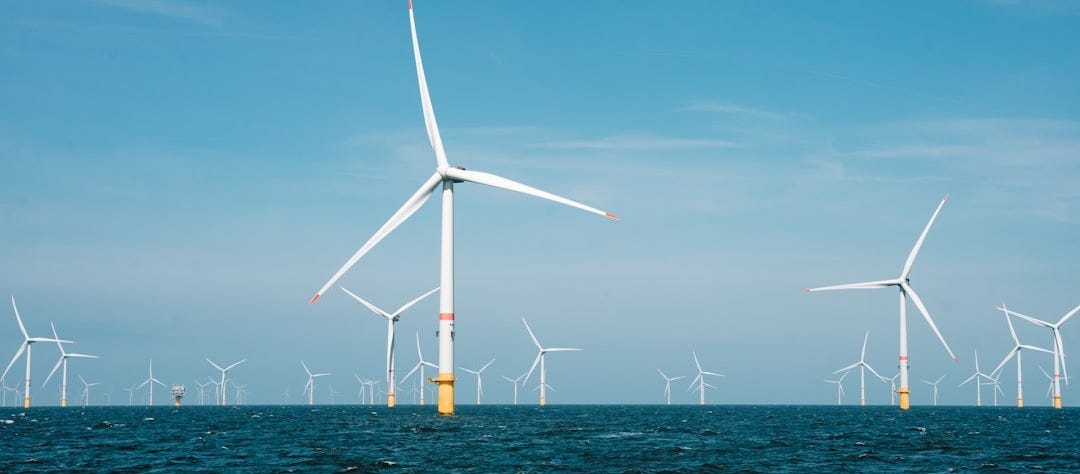
Vineyard Wind still plans to open this year
E&E News by Politico, By Benjamin Storrow, Mar 3, 2025
A major offshore wind project near Massachusetts will be completed this year, and another is in the works, the executive chair of the Spanish power giant Iberdrola told investors last week.
Ignacio Galán’s comment mark a vote of confidence in U.S. offshore wind at a time when the industry has been rocked by President Donald Trump’s decision to freeze new wind permits and review existing ones.
Speaking to investors last week, Galán expressed confidence that Iberdrola’s renewable energy investments would continue under Trump.
Galán said he is “satisfied” with Vineyard Wind’s progress after visiting Boston in February. All of its foundations and so-called transition pieces — which connect the foundations and towers — have been installed. The 62-turbine project is expected to generate enough electricity to power 400,000 homes. Full story.
Vineyard Wind plans to test aircraft lighting system - 12 turbines to go dark starting this week
Vineyard Gazette, by Ethan Genter, Feb 24, 2025
The constantly blinking lights atop the Vineyard Wind offshore wind energy turbines could soon be turned off for most of the night.
Vineyard Wind is set to test its aircraft detection lighting system this week on 12 turbines, Nantucket select board chair Brooke Mohr said in a meeting last week. The lights have remained blinking at night, becoming a hot topic on the sister island and a nuisance for Vineyarders who say the lights stand out against the dark sky.
The system is designed to have the lights off unless an aircraft is approaching. When a plane comes near, the lights on the turbine start to flash red. The system was approved for the project by the Bureau of Ocean Energy Management, but hasn’t been in use as the project is being built.
At the Nantucket select board meeting Wednesday, Ms. Mohr said she talked to Vineyard Wind CEO Klaus Moeller, and he said the first 12 turbines would go dark at night starting this week. Full story.
More Vineyard Wind: Federal officials require review of lightning-struck turbine
MV Times, by by Eunki Seonwoo, Mar 6, 2025
The Bureau of Safety and Environmental Enforcement is requiring Vineyard Wind to conduct a comprehensive assessment of the damaged turbine that was recently struck by lightning.
A bureau spokesperson told the Times the agency is overseeing the response to the lightning strike that hit a Vineyard Wind turbine last week. The spokesperson said the damaged turbine’s lightning protection system was not operational after the blade fractured in July. Other Vineyard Wind turbines have the protection active.
“Vineyard Wind 1 has conducted aerial surveys and is performing an on-site evaluation. The company is expected to share its findings to BSEE,” the statement reads in part. “As part of its oversight responsibilities, BSEE is requiring a comprehensive assessment of the affected turbine and its associated equipment to determine the full extent of any damage.”
Similar to Vineyard Wind officials, the bureau spokesperson stated that debris has not been found around the turbine as a result of the incident. Full story.
SouthCoast Wind construction start date hit by four-year delay
MV Times, by Eunki Seonwoo, updated Mar 3, 2025
On Wednesday, Feb. 26, EDP Renewables CEO Miguel Stilwell d’Andrade told investors during an earnings call that the project is expected to be on hold the entire presidency of Donald Trump, citing the president’s executive order that halts the approval of new permits at new lease areas for offshore wind.
“We’ve taken the more prudent four-year delay approach; could’ve taken a two-year delay, but we took a four-year one,” d’Andrade told investors. “So we still have the project ready to go, and we’ll try to, let’s say, manage that optionality.”
Located 26 nautical miles south of Martha’s Vineyard, SouthCoast Wind is a 2.4-gigawatt project that the Interior Department stated would generate enough electricity to power 840,000 homes in Massachusetts and Rhode Island. Full story.
In September, Massachusetts selected 1,087 MW of the 1,287 MW SouthCoast Wind project, with the remaining 200 MW going to Rhode Island. The contract negotiations between the projects and Bay State utility companies were under way at the start of this year.
United States

Scientists are rising up to resist Trump (and Musk’s) slash-and-burn tactics
March 7 demonstrations across the U.S. and Europe will protest cuts to research, staffing and funding, and push for a continued federal focus on diversity, equity and inclusion.
Inside Climate News by Bob Berwyn. Mar 6, 2025
Thousands of scientists from scores of countries around the world are joining together in solidarity to oppose attempts by the Trump administration to enact what they see as anti-scientific measures that threaten public health and the environment around the world.
The first show of unified global resistance is planned for March 7, with Stand Up For Science marches and demonstrations planned in Washington, D.C., and at least 32 more cities around the United States, as well as in several other cities around the world.
“There’s never been a more important time to stand up for science,” said climate scientist Michael Mann, director of the Center for Science, Sustainability & the Media at the University of Pennsylvania, who will speak at the March 7 rally in Washington. Full story.

Don’t sleep on this:
Industry-backed legislation would bar the use of science behind hundreds of environmental protections
Two bills in Congress would prohibit the Environmental Protection Agency from using hundreds of chemical assessments completed by its IRIS program in environmental regulations or enforcement.
Pro Publica, by Sharon Lerner, Mar 6, 2025
For decades, Republican lawmakers and industry lobbyists have tried to chip away at the small program in the Environmental Protection Agency that measures the threat of toxic chemicals.
Most people don’t know IRIS, as the program is called, but it is the scientific engine of the agency that protects human health and the environment. Its scientists assess the toxicity of chemicals, estimating the amount of each that triggers cancer and other health effects. And these values serve as the independent, nonpartisan basis for the rules, regulations and permits that limit our exposure to toxic chemicals.
Now IRIS faces the gravest threat to its existence since it was created under President Ronald Reagan four decades ago.
Legislation introduced in Congress would prohibit the EPA from using any of IRIS’ hundreds of chemical assessments in environmental rules, regulations, enforcement actions and permits that limit the amount of pollution allowed into air and water.
The EPA would also be forbidden from using them to map the health risks from toxic chemicals. The bills, filed in both the U.S. Senate and House of Representatives earlier this year, are championed by companies that make and use chemicals, along with industry groups that have long opposed environmental rules. If it becomes law, the “No IRIS Act,” as it’s called, would essentially bar the agency from carrying out its mission, experts told ProPublica.
“They’re trying to undermine the foundations for doing any kind of regulation,” said William Boyd, a professor at UCLA School of Law who specializes in environmental law. Boyd noted that IRIS reports on chemicals’ toxicity are the first step in the long process of creating legal protections from toxic pollutants in air and water.
“If you get rid of step one, you’re totally in the dark,” he said.
If the act passes, companies could even use the law to fight the enforcement of environmental rules that have long been on the books or permits that limit their toxic emissions, environmental lawyers told ProPublica. Full story.
And for existing laws, SCOTUS strikes again, and we can blame…San Francisco
US supreme court weakens rules on discharge of raw sewage into water supplies, undermining the 1972 Clean Water Act
The Guardian, Nina Lakhani, Mar 4, 2025
The US supreme court has weakened rules on the discharge of raw sewage into water supplies in a 5-4 ruling that undermines the 1972 Clean Water Act.
In a 5-4 ruling written by Justice Samuel Alito, the court blocked the EPA from issuing permits that make a permittee responsible for surface water quality, or “end result” permits – a new term coined by the court.
The EPA issued San Francisco a permit allowing it to discharge pollutants from its combined sewer system into the Pacific Ocean. The permit’s conditions include prohibitions on discharges that contribute to a violation of applicable water quality standards. The permit included generic prohibitions on the impacts to water quality, as part of the EPA’s efforts to halt San Francisco’s releases of raw sewage into the Pacific Ocean during rainstorms.
San Francisco challenged these conditions, arguing that EPA lacks statutory authority to impose them. Full story.
2024 full year of data on US electricity generation sources released last week: Texas leads country mile in renewables
Solar power grew by a lot in 2024 and coal continued to fall, according to EIA.
Inside Climate News, by Dan Gearino, Mar 6, 2025
The U.S. Energy Information Administration released electricity generation data last week for December 2024, which means we now have a full picture for the year…and the data tell many stories about how our electricity mix is evolving.
First, the topline: U.S. power plants generated 4.3 million gigawatt-hours in 2024, an increase of 2.9 percent from the prior year. That’s a large increase, but within the bounds of normal.
“All the trends that we’ve been seeing that have happened for a long time are continuing,” said Ric O’Connell, executive director of GridLab, a nonprofit that does technical analysis for regulators and renewable power advocates. “Wind and solar are continuing to provide a larger share. Coal is continuing to decline.”
Wind is the leading source of renewable electricity with 453,454 gigawatt-hours, up 7.7 percent from the prior year. Hydropower plants generated 242,226 gigawatt-hours, down 1.1 percent. Utility-scale solar generated 215,416 gigawatt-hours, up 32 percent. Full story.
Massachusetts has a way to go, building renewables — meeting the state’s decarbonization targets depend heavily on getting offshore wind up and running.
Most contaminated U.S. nuclear site is set to be the country’s largest solar farm
New York Times, by Keith Schneider, Mar 5, 2025
Plans to transform Hanford, which was integral to the nation’s nuclear arsenal after World War II, had just begun inching forward when President Trump started his second term.In Washington State, a government-led effort has just started to build what is expected to be the country’s largest solar generating station. The project is finally inching forward, after decades of cleaning up radioactive and chemical waste in fits and starts, at the Hanford Nuclear Reservation, a sweep of desert that was pivotal to the nation’s weapons arsenal from 1943 until it was shut down in 1989. A developer, Hecate, was brought on last year to turn big stretches of the site into solar farms.
Hecate will have access to 10,300 acres that the government has determined sufficiently safe to redevelop. The company has already started site evaluation on 8,000 acres, an area nearly 10 times the size of Central Park in New York and enough space for 3.45 million photovoltaic panels. (Hanford’s site is nearly 400,000 acres.)
If all goes according to plan, the Hecate project, which is expected to be completed in 2030, will be by far the largest site the government has cleaned up and converted from land that had been used for nuclear research, weapons and waste storage. It is expected to generate up to 2,000 megawatts of electricity — enough roughly to supply all the homes in Seattle, San Francisco, and Denver — and store 2,000 more in a large battery installation at a total cost of $4 billion. The photovoltaic panels and batteries will provide twice as much energy as a conventional nuclear power plant. The nation’s current biggest solar plant, the Copper Mountain Solar Facility in Nevada, can generate up to 802 megawatts of energy.
While a clean energy project may clash with Mr. Trump’s policies, there’s a reason the administration may allow Hecate’s solar development to move forward: the revenue the government will get for the land lease. Hecate and the Energy Department declined to discuss the land’s market value, but private solar developers in the region said such easements typically paid landowners $300 an acre annually.
Two officials at the Energy Department, who asked not to be named for fear of retaliation, said that neither the president nor the leaders of the administration’s effort to reshape federal agencies had yet to intervene in the solar project, but that the future of the initiative was uncertain. One of the officials said the new energy secretary, Chris Wright, a former oil executive, had not yet reviewed the project as of late February. Full story.
You can take a virtual tour of the Hanford site here, courtesy of the US Department of Energy.
International
Europe’s race to build a war economy has led the bloc to pull spending desperately needed for another crisis: the climate
Bloomberg, by Gautam Naik, Mar 5, 2025
The redirection of billions of euros away from development finance meant to fight the fallout of floods, droughts and cyclones in poorer countries has the potential to fuel European inflation, drive up immigration and weaken the bloc’s standing abroad.
"We are mutually dependent on these countries,” said Gareth Redmond-King, head of international program at Energy and Climate Intelligence Unit, a nonprofit.
In the U.K., Prime Minister Keir Starmer has announced plans to cut aid spending by £6 billion ($7.6 billion) to make room for increased military spending. Germany intends to scale back development finance by almost $1 billion, while the Netherlands has unveiled €2.4 billion ($2.5 billion) of cuts. Across Europe, governments including Finland, Sweden and Switzerland are releasing similar plans. Full story.
Activities and Events
Mar 8, in person — Mass Audubon’s Natural History Conference
Mass Audubon Cape Cod Regional Director Melissa Lowe says she always looks forward to this annual event. “The natural history conference has always been one of my favorite events in large part because of the special opportunity to meet and talk to local scientists one-on-one. It provides a place to learn about the people and local organizations doing important environmental work, to network—and even to inspire for future projects by sharing questions and ideas.”
Coffee and refreshments will be provided, but attendees are encouraged to bring lunch and a coffee mug to reduce waste.
The cost of the conference is $25 per person and $15 for students (with student ID).
Register and purchase your ticket here.
📅March 8, 8:30 am - 3:30 pm 🗺️📌Tilden Arts Center, Cape Cod Community College, 2240 Iyannough Rd, West Barnstable
Mar 18, virtual — Sierra Club’s Cape Cod & Islands Group “Third Tuesday” Talk: Climate Change & Mental Health, Building Resilience
Featuring Dr. James McKowen, clinical psychologist and professor at Harvard Medical School and Massachusetts General Hospital.
Mark your calendar — registration link will be shared next week.
📅March 18, 7:00 - 8:00 pm 🗺️📌On zoom
Mar 25, in person — Climate Change: What Homeowners Should Know & What They Can Do
Hosted by the Orleans and Harwich Climate Action Networks, the Eastham Climate Action Committee
Cape Cod, jutting into the Atlantic Ocean, faces significant threats from climate change, but there are solutions, and you can be part of them.
Join Shelly McComb, Coastal Resilience Specialist for Cape Cod Cooperative Extension and Woods Hole Oceanographic Institution’s Sea Grant, to explore local and global coastal challenges. Shelly, with a background in environmental and sustainability studies, works directly on coastal resilience planning and will share practical strategies for strengthening our communities.
More information here.
📅March 25, 10:30 am - 12:00 pm 🗺️📌Snow Library, Orleans
From APCC: Volunteers Needed for 2025 River Herring Count Across Cape Cod
A reminder that volunteers are urgently needed for the 2025 river herring count at multiple runs across Cape Cod. Locations include Brewster, Barnstable, Dennis, Falmouth, Mashpee, Orleans, Sandwich, and Yarmouth. These counts provide critical data to help protect keystone fish species and assess habitat restoration needs.
Volunteers must be able to travel to their assigned site, navigate uneven terrain, and visually identify fish. Each count takes just 10 minutes and occurs several times a week from April 1 to June 15. This is a great opportunity to support local conservation efforts with a minimal time commitment!
Those interested can sign up now through APCC’s River Herring Volunteer Signup and attend a training sessions in March. More details are available on the Herring Hub website.
Sign up to volunteer as a herring counter here.
APCC: Pond Volunteer opportunities opening soon!
Save the date: zoom training on March 18 at 6 p.m.
Apply to voluteer as a pond monitor here.
ICYMI — Sierra Club, Cape & Islands: Marine Debris, Plastic Foam Collection & Pollution Prevention
Featuring Laura Ludwig, director of the Marine Debris & Plastics Program at the Center for Coastal Studies. 🎦Watch video here.
Wildlife photography, learn about coyotes, and lots of walks — Check out the Cape Cod Conservation Calender HERE
Powered by the “Communications Cohort,” co-led by the Barnstable Land Trust and APCC.

